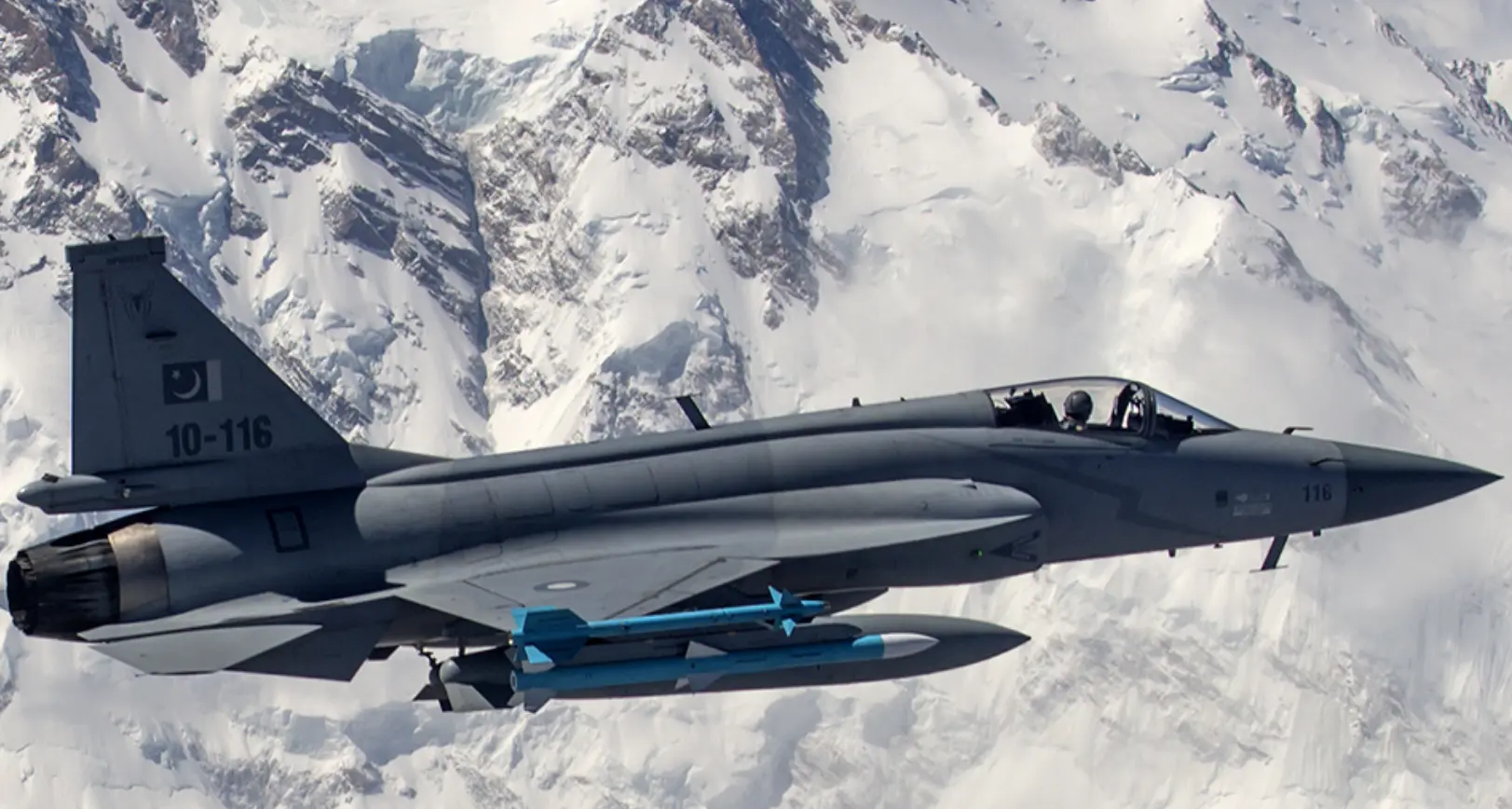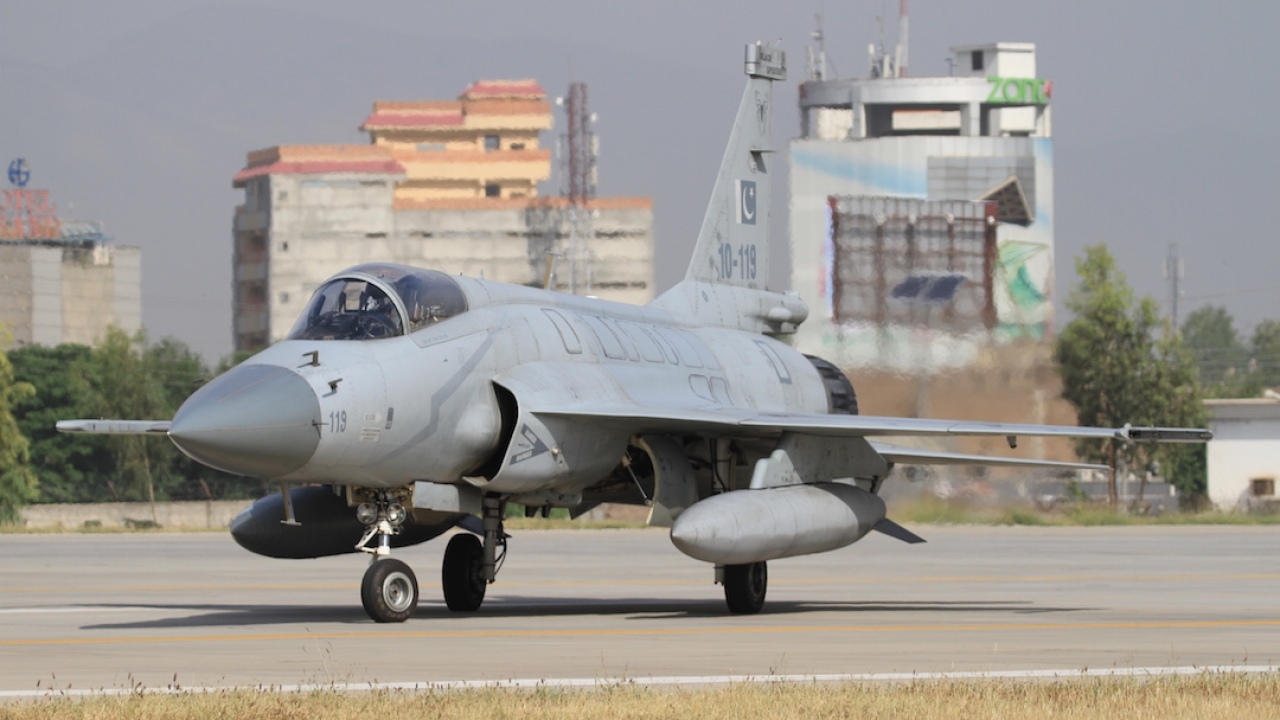The first Pakistani aircraft that made a significant mark in the history of aviation was the JF-17 Thunder. This remarkable aircraft, which was developed as part of a joint venture between Pakistan and China, represents a leap forward in Pakistan’s military aviation capabilities. In this article, we will explore the development, features, and significance of the JF-17 Thunder, as well as its contributions to the Pakistan Air Force (PAF).
The JF-17 Thunder is a groundbreaking achievement for Pakistan, marking the first Pakistani aircraft designed and manufactured with international collaboration. Developed by Pakistan Aeronautical Complex (PAC) and Chengdu Aircraft Corporation (CAC), the JF-17 Thunder has become an essential part of the Pakistan Air Force (PAF), providing advanced capabilities for air superiority, ground attack, and close air support. Its success has paved the way for further advancements in Pakistan’s aviation industry and has strengthened the country’s defense capabilities.
The JF-17 Thunder is a testament to Pakistan’s growing technological prowess and its ability to develop world-class military aircraft. As the Pakistan Air Force continues to use the JF-17 Thunder in various operational roles, it is clear that this aircraft will remain a key asset for Pakistan’s defense for many years to come.
Introduction of JF-17 Thunder
The JF-17 Thunder is a lightweight, multi-role combat aircraft that was developed jointly by the Pakistan Aeronautical Complex (PAC) and the Chengdu Aircraft Corporation (CAC) of China. It is the first Pakistani aircraft to be designed and manufactured domestically with significant international collaboration. The JF-17 Thunder was formally introduced to the nation in 2007, marking a milestone in Pakistan’s aviation history.

The aircraft is designed to meet the needs of modern combat, offering advanced technology, versatility, and affordability. The JF-17 Thunder is widely regarded as one of the most successful and cost-effective combat aircraft in the world, offering a balanced mix of capability and affordability for the Pakistan Air Force (PAF).
Development of the JF-17 Thunder
Joint Venture Between Pakistan and China
The development of the JF-17 Thunder was a result of collaboration between Pakistan Aeronautical Complex (PAC) and Chengdu Aircraft Corporation (CAC) of China. The partnership aimed to produce an aircraft that could meet the needs of the Pakistan Air Force (PAF) while also being cost-effective. The aircraft was designed to replace the aging fleet of Mirage III and F-7 aircraft in the PAF.
The collaboration between Pakistan and China allowed for the sharing of technology, expertise, and resources, leading to the development of a modern, capable fighter aircraft. The JF-17 Thunder was built with the intention of providing the PAF with a more affordable alternative to expensive Western aircraft, without compromising on performance or capabilities.
Prototype and First Flight
The first prototype of the JF-17 Thunder was rolled out in May 2003, and it took its first flight in August 2003. The aircraft underwent extensive testing and development before it was officially introduced to the Pakistan Air Force. After a series of successful tests, the JF-17 Thunder was formally presented to the nation in 2007, marking a significant achievement in Pakistan’s aviation industry.
Key Features of the JF-17 Thunder
Design and Specifications
The JF-17 Thunder is a fourth-generation multirole combat aircraft with a single-engine design. It is equipped with modern avionics, radar, and weapon systems, making it highly effective in both air-to-air and air-to-ground combat. Some of the key specifications of the JF-17 Thunder include:
-
Length: 14.93 meters (49 feet)
-
Wingspan: 9.48 meters (31 feet)
-
Maximum Speed: Mach 1.6 (1,200 mph or 1,930 km/h)
-
Range: 3,000 km with drop tanks
-
Service Ceiling: 55,000 feet
-
Armament: The aircraft is equipped with a wide variety of weapons, including air-to-air missiles, air-to-ground missiles, precision-guided bombs, and a 23mm cannon.
The JF-17 Thunder is designed to be highly maneuverable, with advanced fly-by-wire controls and a low radar cross-section, which makes it a difficult target for enemy radar systems. Its lightweight design allows for superior agility, making it highly effective in dogfights and close air support missions.
Multirole Capabilities
One of the standout features of the JF-17 Thunder is its multirole capabilities. The aircraft is designed to perform a wide range of missions, including:
-
Air Superiority: The JF-17 Thunder is equipped with advanced radar and weapons systems, allowing it to engage enemy aircraft effectively.
-
Ground Attack: The aircraft can carry precision-guided bombs and air-to-ground missiles, making it effective in ground attack missions.
-
Close Air Support: The JF-17 Thunder is highly maneuverable and can provide close air support to ground troops in combat situations.
-
Reconnaissance: The aircraft is capable of performing reconnaissance missions, gathering intelligence and providing valuable information to commanders.
The JF-17 Thunder is built to excel in both air-to-air and air-to-ground combat scenarios, offering Pakistan a versatile platform for various operational needs.
Role of the JF-17 in the Pakistan Air Force
Replacing the Aging Fleet
The JF-17 Thunder was developed to replace the aging fleet of Mirage III and F-7 aircraft in the Pakistan Air Force (PAF). The introduction of the JF-17 Thunder allowed the PAF to modernize its fleet and enhance its operational capabilities. The aircraft provided a more cost-effective solution compared to acquiring expensive Western fighter jets, allowing the PAF to maintain a strong and capable air force without overburdening the national budget.
The JF-17 Thunder has played a crucial role in modernizing the Pakistan Air Force by providing a versatile, affordable, and capable combat platform. The aircraft has become an integral part of the PAF, contributing to Pakistan’s defense strategy and ensuring air superiority in the region.
Operational History
Since its induction into the Pakistan Air Force, the JF-17 Thunder has played a key role in various military operations and exercises. It has been deployed in numerous combat scenarios, providing air support during conflicts and performing air patrols along the country’s borders. The JF-17 Thunder has also participated in international air exercises, showcasing Pakistan’s growing aviation capabilities.
The JF-17 Thunder has proven to be highly effective in combat, with its versatility and advanced technology allowing it to carry out a wide range of missions. The aircraft has been involved in several successful military operations, and its continued use by the Pakistan Air Force underscores its importance to the nation’s defense strategy.

FAQs
1. What is the first Pakistani aircraft?
The first Pakistani aircraft is the JF-17 Thunder, which was developed jointly by Pakistan Aeronautical Complex (PAC) and Chengdu Aircraft Corporation (CAC) of China.
2. When was the JF-17 Thunder first introduced?
The JF-17 Thunder was formally presented to the nation in 2007.
3. What are the key features of the JF-17 Thunder?
The JF-17 Thunder is a fourth-generation, multirole combat aircraft with a single engine, advanced avionics, radar, and weapon systems. It has a maximum speed of Mach 1.6 and a range of 3,000 km with drop tanks.
4. What is the role of the JF-17 Thunder in the Pakistan Air Force (PAF)?
The JF-17 Thunder plays a crucial role in the Pakistan Air Force (PAF) by replacing the aging fleet of Mirage III and F-7 aircraft, providing air superiority, ground attack, close air support, and reconnaissance capabilities.
5. Who developed the JF-17 Thunder?
The JF-17 Thunder was developed jointly by Pakistan Aeronautical Complex (PAC) and Chengdu Aircraft Corporation (CAC) of China.





.gif)








.gif)







Sign in
to continue to ilmkidunya.com